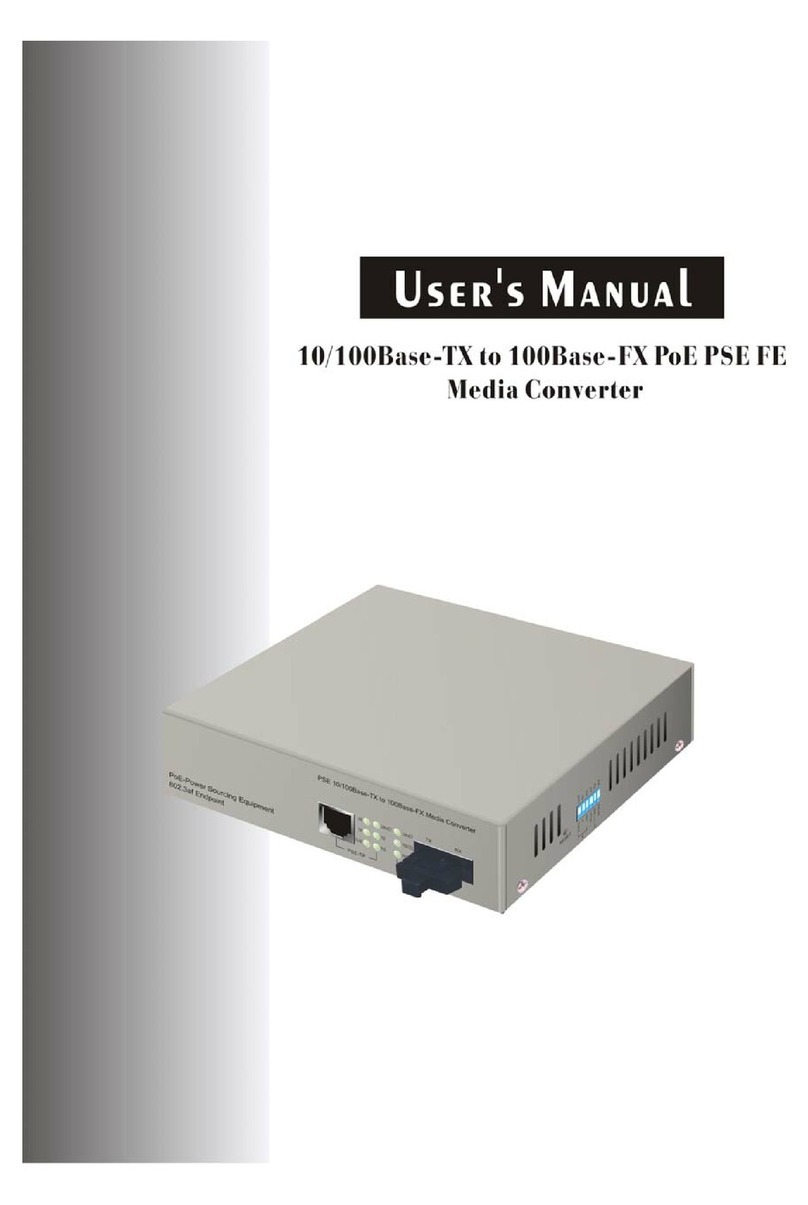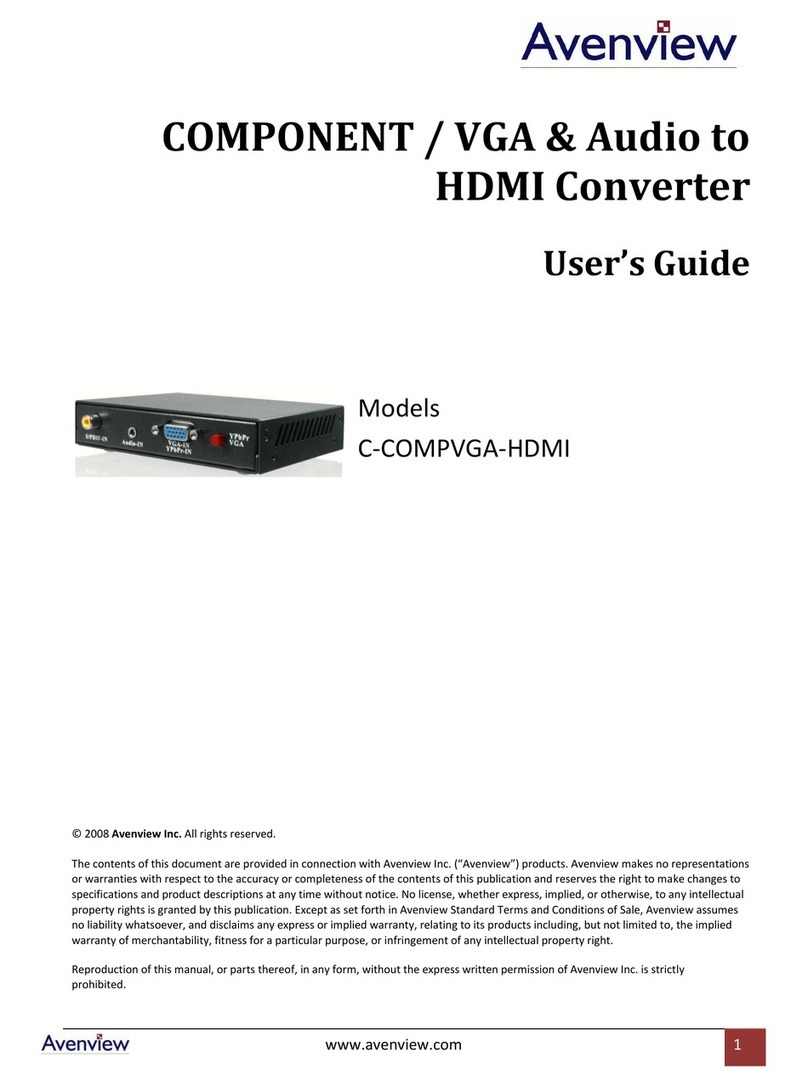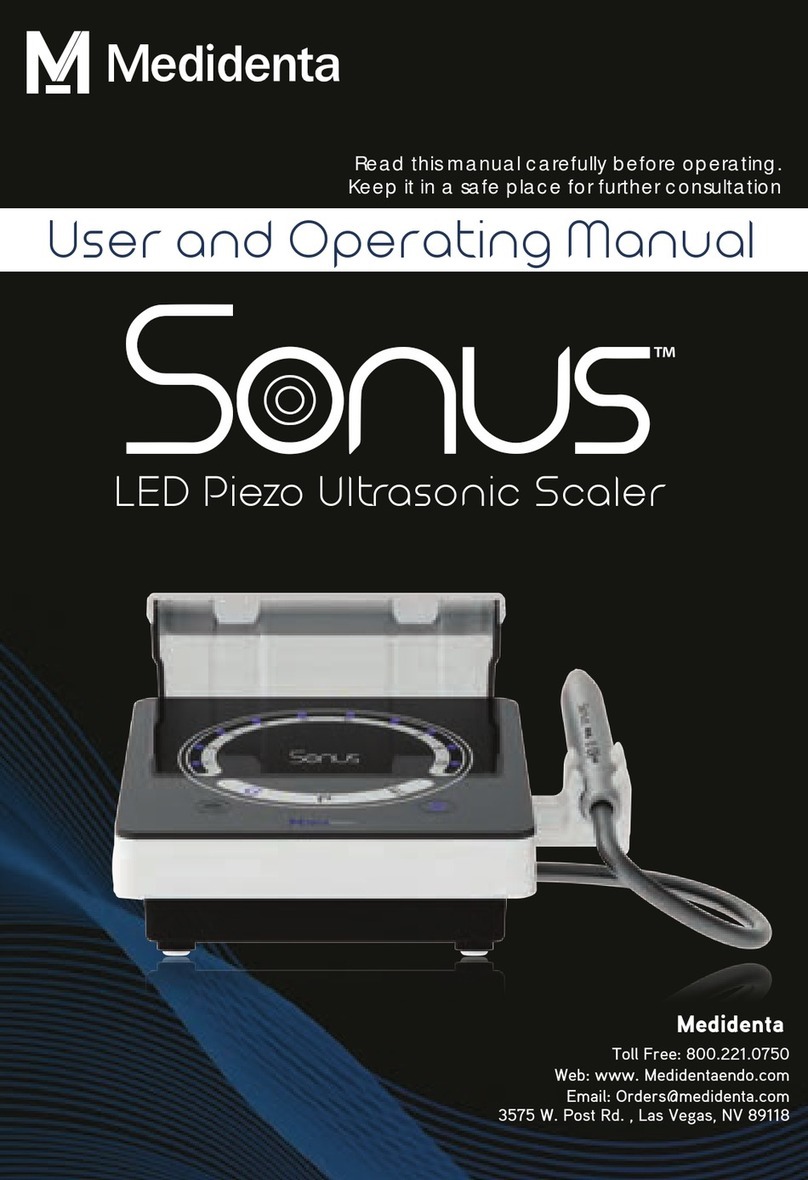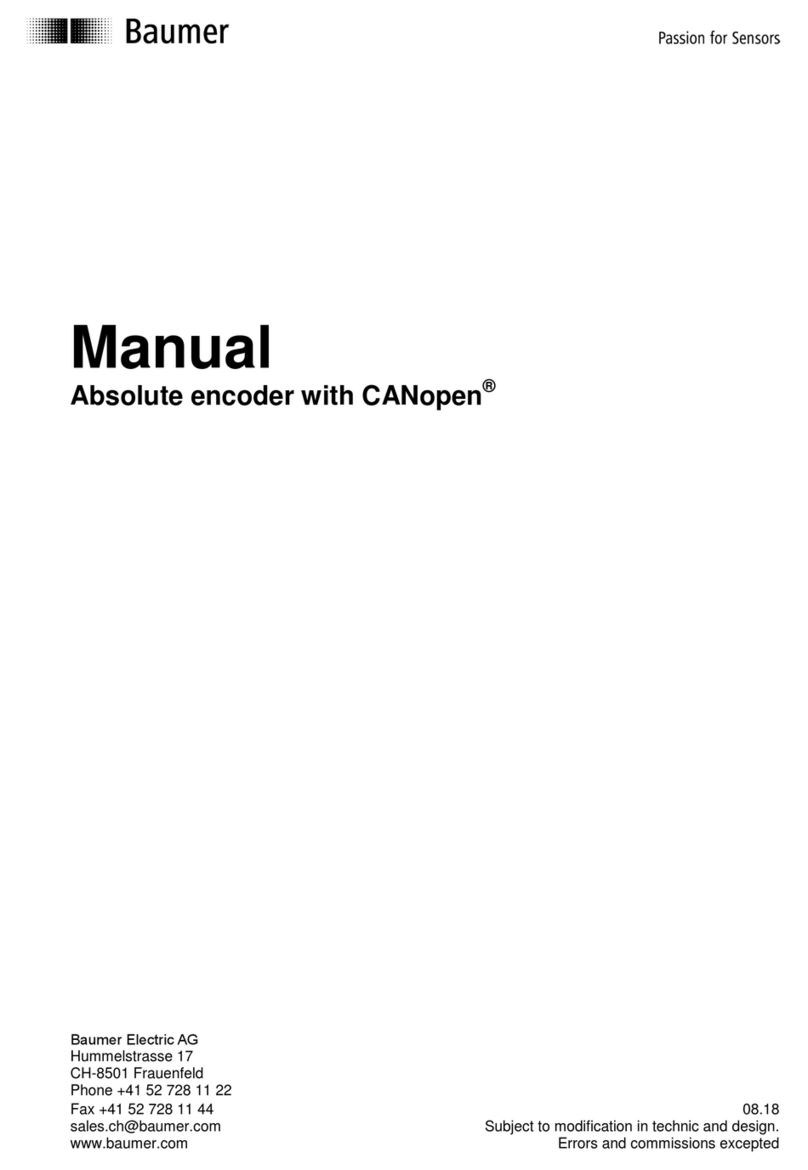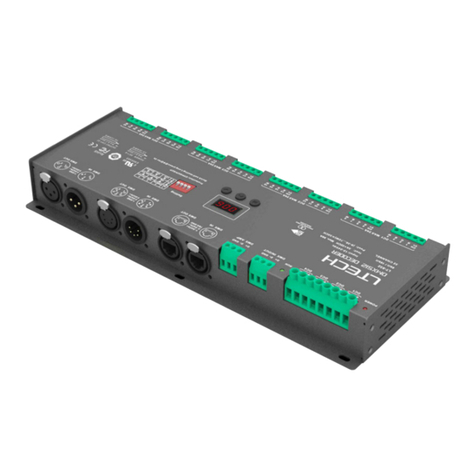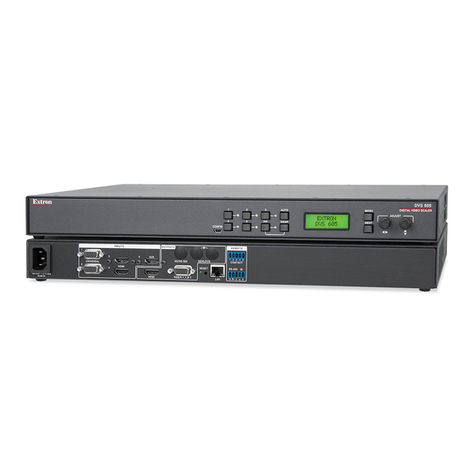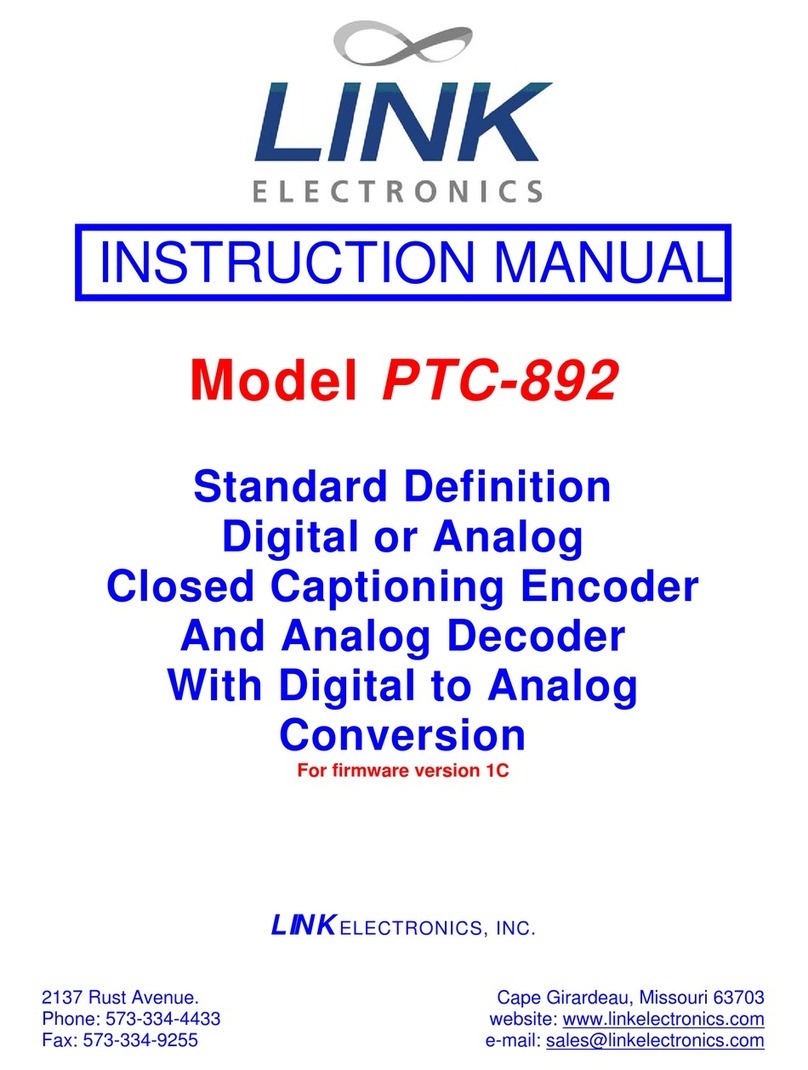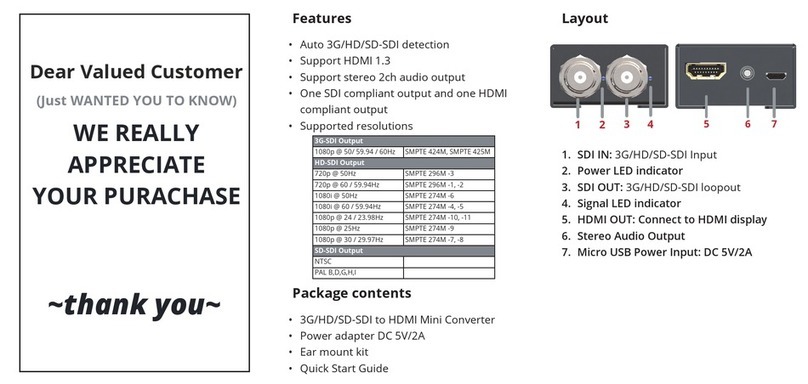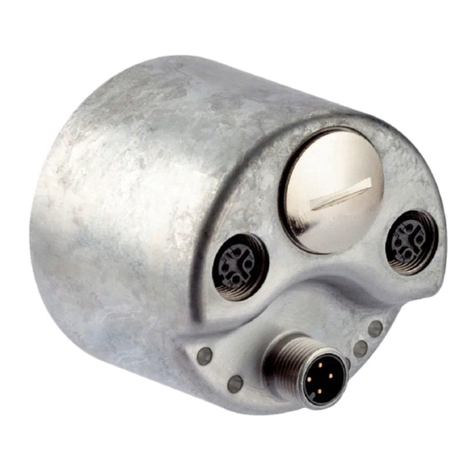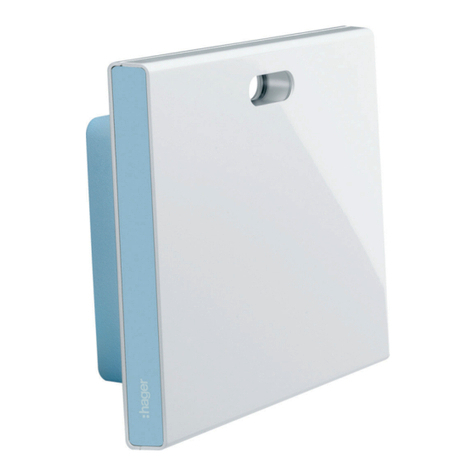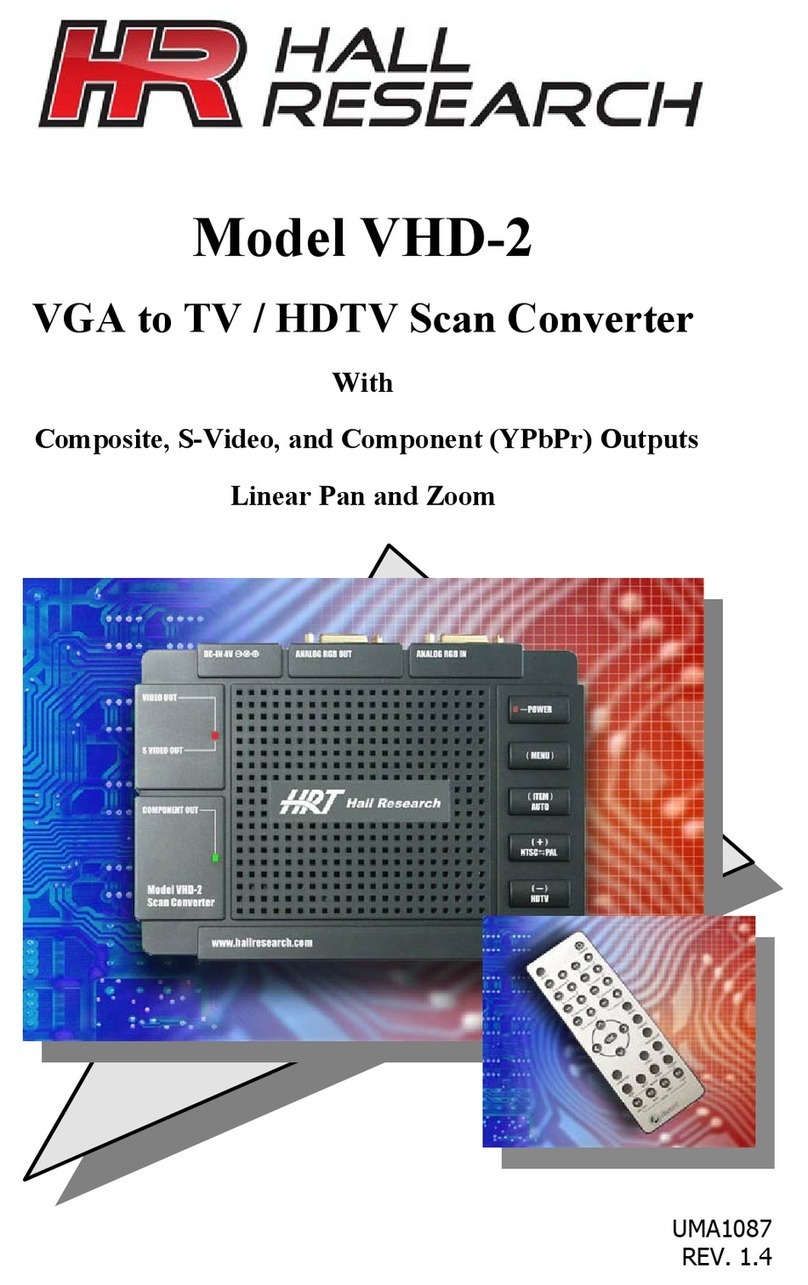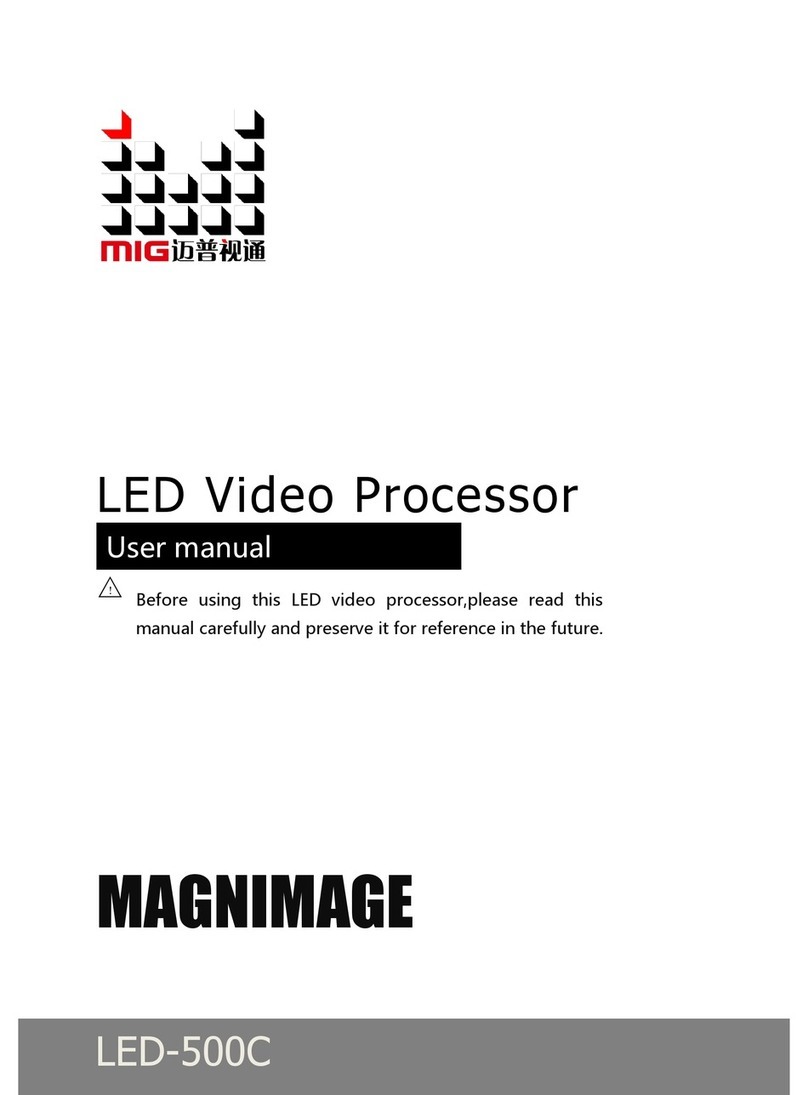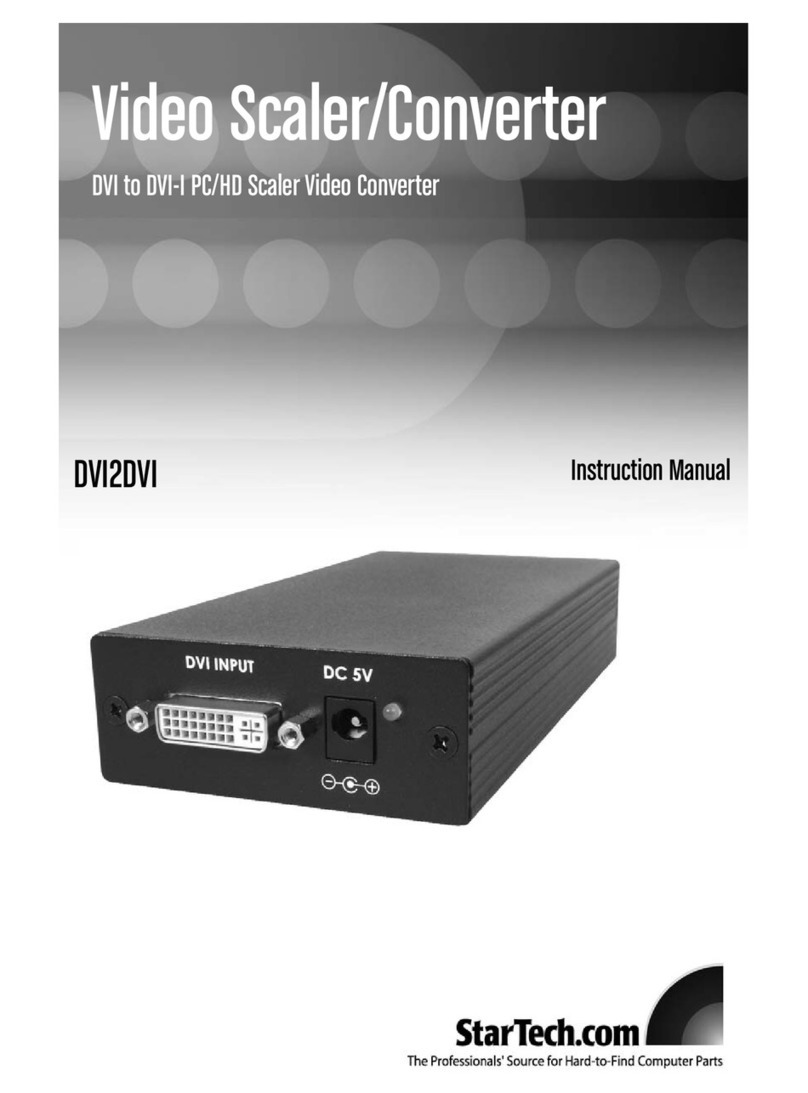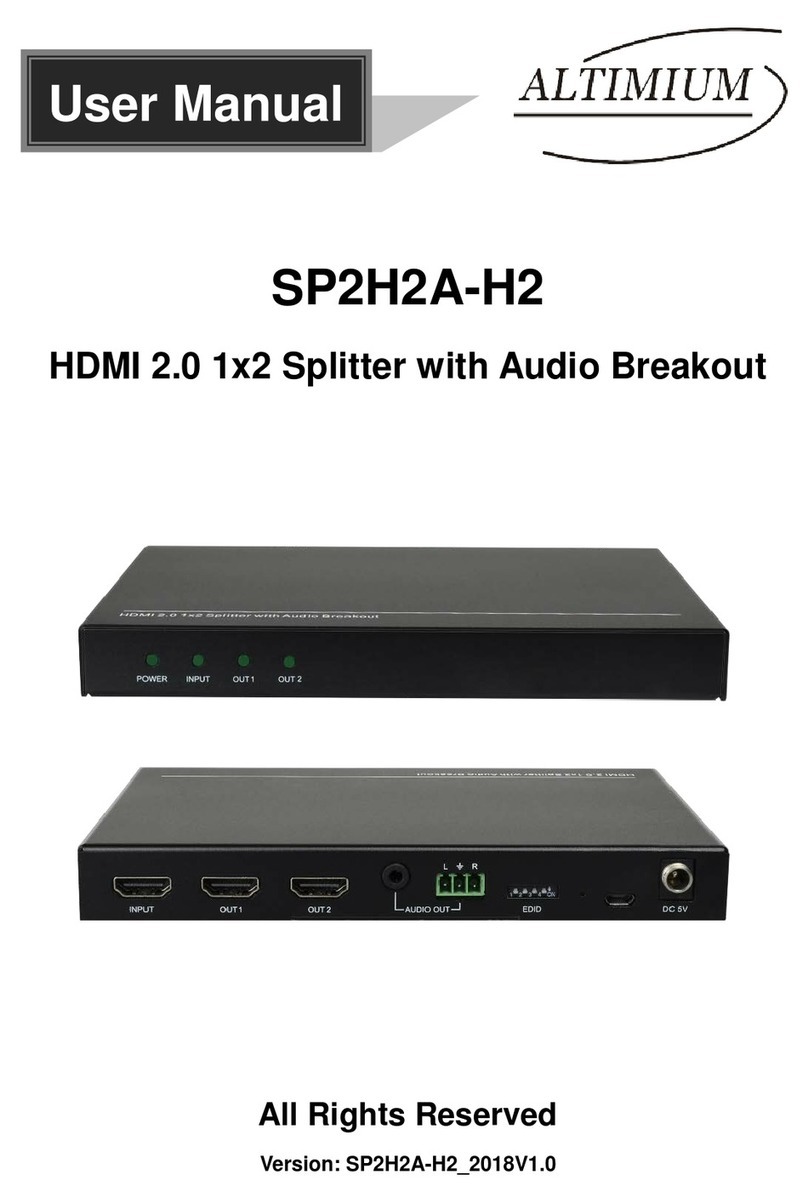Network Electronics Flashlink ETH100 User manual

network-electronics.com
Fast Ethernet Fibre Converter
Rev. 7
Flashlink User Manual
ETH100

ETH100 Rev. 7
Network Electronics ASA
Thorøya
P.O. Box 1020
N-3204 Sandefjord, Norway
Phone: +47 33 48 99 99
Fax: +47 33 48 99 98
Email: [email protected]
www.network-electronics.com
Support Phone: +47 90 60 99 99
Revision history
Current revision of this document is the uppermost in the table below.
Revision Replaces Date Change description
7 6 2007-10-26 New front page
6 5 2007-10-05 Added Materials Declaration and EFUP; updated EC
Declaration of Conformity
5 4 2006-12-15 Changed maximum optical input
4 3 2006-11-08 Changed Optical Sensitivity
3 2 2006-03-13 Corrected Optical Sensitivity in Chapter 5.
2 1 2006-02-06 Updated CWDM laser options.
1 0 2003-09-30 Description of changes in rev.1 (DIP. Sw)
0 - 2002-10-03 Initial version
network-electronics.com | 2

ETH100 Rev. 7
Contents
Revision history ......................................................................................2
Contents................................................................................................3
1 Product versions..................................................................................4
2 Product overview ................................................................................5
3 Specifications ......................................................................................6
4 Laser options.......................................................................................7
5 Switch operation.................................................................................8
6 Connector module..............................................................................9
6.1 Mounting the connector module.........................................................................9
7 Status indicators................................................................................10
7.1 Front Panel LEDs................................................................................................10
7.2 Indicators for electrical Ethernet ports................................................................11
7.3 DIP switches - Version 2.....................................................................................12
7.3.1 DIP switch # 1 & 2 Auto ........................................................................................... 12
7.3.2 DIP switch # 3 MDI/MDIX ........................................................................................ 12
7.3.3 DIP switch # 8 Sensitivity limitations ......................................................................... 12
8 Laser safety precautions ....................................................................13
General environmental requirements for Network Electronics equipment
............................................................................................................14
Product Warranty.................................................................................15
Materials declaration and recycling information Materials declaration .16
Environmentally-friendly use period .....................................................17
Recycling information ..........................................................................18
EC Declaration of Conformity...............................................................19
network-electronics.com | 3

ETH100 Rev. 7
1Product versions
There are two different hardware versions of the ETH-100 card which are referred to as
“Version 1” and “Version 2” in this manual. The figures below show how to distinguish the
two versions from each other. The only difference is the DIP switch row, which is
implemented on Version 2, this described in chapter 7.3.
ETH-100 Version 1
ETH-100 Version 2
(with DIP switches)
network-electronics.com | 4

ETH100 Rev. 7
2Product overview
The Flashlink ETH100 is a 10Base-T/100BaseTX to fibre converter module in the Network
Flashlink family. The module converts a standard 10 or 100 Mbit/s Ethernet signal on copper
to fibre suitable for long haul applications. The module has two electrical Ethernet ports. The
ports are independent of each other, and can be used for 10 or 100Mbit/s Ethernet. Both
ports can be used simultaneously. The fibre link is always 100Mbit/s, and can be used in one
or two fibre installations, or occupy two wavelengths in a WDM, CWDM or DWDM
installation.
For DWDM applications the module has an electrical output which can be connected to a
standard DWDM E/O converter (e.g. SDI-EO-D15xx.xx) together with the optical input. The
module is designed to replace a receiver card in a standard DWDM frame, giving the system
designers flexibility in customising their systems.
network-electronics.com | 5

ETH100 Rev. 7
3Specifications
Optical input:
Sensitivity: Better than –32dBm
Optical wavelength: 1200nm – 1610nm
Transmission circuit fibre: Multi mode 50/125 um, single mode 9/125um compatible
Return loss: >40dB with single mode fibre
Detector damage threshold: >+1dBm
Max input power: -6 dBm
Connector: SC/UPC
Optical output:
Transmission circuit fibre: Single Mode
Light source: F-P/DFB Laser
Optical wavelength : See Laser Options below
Ethernet:
2 x 10BaseT/100BaseTx on RJ-45 connectors, compliant with IEEE 802.3 and IEEE 802.3u,
speed auto sensing, auto MDI/MDI-X
Electrical:
Power: +5V DC/4W and –15VDC/0.1W
Control: Control system for access to setup and module status with
BITE (Built-In Test Equipment)
network-electronics.com | 6

ETH100 Rev. 7
4Laser options
The ETH100 card is available in the following versions:
ETH100-13T -7.5dBm 1310± 40nm -7.5 dBm F-P laser
ETH100-13T 0 dBm 1310± 40nm 0 dBm F-P laser
ETH100-15T 0 dBm 1550± 40nm 0 dBm DFB laser
CWDM (DFB lasers)
ETH100-C1470 1470± 6nm 0dBm ETH100-C1270 1270± 6nm 0dBm
ETH100-C1490 1490± 6nm 0dBm ETH100-C1290 1290± 6nm 0dBm
ETH100-C1510 1510± 6nm 0dBm ETH100-C1310 1310± 6nm 0dBm
ETH100-C1530 1530± 6nm 0dBm ETH100-C1330 1330± 6nm 0dBm
ETH100-C1550 1550± 6nm 0dBm ETH100-C1350 1350± 6nm 0dBm
ETH100-C1570 1570± 6nm 0dBm ETH100-C1370 1370± 6nm 0dBm
ETH100-C1590 1590± 6nm 0dBm ETH100-C1390 1390± 6nm 0dBm
ETH100-C1610 1610± 6nm 0dBm ETH100-C1410 1410± 6nm 0dBm
network-electronics.com | 7

ETH100 Rev. 7
5Switch operation
The ETH100 contains a complete non blocking 3 port Ethernet switch. One port is the fibre
port; the two other ports are the electrical ports. The fibre port is always running in 100
Mbit/s full duplex operation, the two electrical ports can run in 10 or 100Mbit/s, full or half
duplex. The switch incorporates a high performance MAC address lookup engine, which
learns which devices are connected to each port, and minimises traffic on each port.
The switch learns what port an end station is connected to, by remembering each packet
source address (MAC address) and what port the packet came from. Once a MAC address to
port mapping is learnt, all other packets to that MAC address are directed to the correct port
only. If a packet is sent to a new (currently unlearnt) address, the packet will be transmitted
to all ports except the one that the packet came from. This insures the packet will be
received by the correct end station (if it exists), and when the end station responds back, its
address will be learnt by the switch for the next series of packets. The switch will learn up to
4096 MAC addresses. An address mapping will be removed after 10 minutes without packet
traffic from that node.
Important: If you move an end station (e.g. a PC or a router) from one port to
another, you might have to wait for up to 10 minutes before the switch
recognises that the node has moved, and all traffic to that node will be sent to
the wrong port. As soon as the moved end station sends out a packet, the switch
will detect that the node has moved, and the address/port mapping is updated,
and the traffic will continue as before.
network-electronics.com | 8

ETH100 Rev. 7
6Connector module
The ETH100 has a dedicated connector module: ETH100-C1. This module is mounted at the
rear of the sub-rack.
6.1 Mounting the connector module
The details of how the connector module is mounted, is found in the user manual for the
Flashlink frame FR-2RU-10-2.
This manual is also available from our web site: http://www.network-electronics.com/.
network-electronics.com | 9

ETH100 Rev. 7
7Status indicators
7.1 Front Panel LEDs
The status of the module can be easily monitored visually by the LEDs at the front of the
module.
LED Description Green light Red light No light
STAT Module
status
Module self-test is OK
and power is present.
Module initialising
(takes approx. 2 sec).
The laser is turned off.
Module is faulty (fuse
blown, laser failure,
laser APC out of lock,
etc). The card needs
factory reparation.
Module has no
power.
LOS Loss of
optical
signal
Optical input signal
present.
Note: This is an optical
measurement; a green
light does not imply that
there exists a valid
Ethernet signal on the
optical input.
No optical input signal.
Check fibre
connection.
Check card in opposite
end.
LINK Ethernet
link
Ethernet link to opposite
end established.
Ethernet link to
opposite end not
established.
ACT Ethernet
activity
Flashes when Ethernet
packets are sent over the
fibre link. When the
Ethernet activity is high,
this will be on
continuously.
The fibre link is
idle, no packets
are sent on the
link.
network-electronics.com | 10

ETH100 Rev. 7
7.2 Indicators for electrical Ethernet ports
The status of the electrical Ethernet ports is indicated with 6 Light Emitting Diodes (LEDs), 3
for each electrical port. The LEDs are located in the upper left corner of the ETH100 board,
so you have to remove the front cover of the sub rack to inspect them.
The LEDs are labelled E1 and E2 for electrical port #1 and electrical port #2.
LED Description On (green light) Off (no light)
LINK Ethernet link The Ethernet link is established. No link (Is the cable
connected, and is the
equipment in the other end of
the cable switched on?)
ACT Activity Flashes when Ethernet packets
are sent over the Ethernet port.
When the Ethernet activity is
high, this will be on
continuously.
The Ethernet port is idle, no
packets are sent.
SPEED Ethernet speed The link is established in
100Base-TX mode (100Mbit/s).
The link is established in
10Base-T mode (10Mbit/s).
network-electronics.com | 11

ETH100 Rev. 7
7.3 DIP switches - Version 2
The tables, on the next page, explain the functionality of the DIP switches shown in the
figure below.
DIP switch # 1
DIP switch # 8
DIP switch # Description
1
2 Auto
3 MDI/ MDIX
4 Reserved
5 Reserved
6 Reserved
7 Reserved
8 Sensitivity Limitation
7.3.1 DIP switch # 1 & 2 Auto
Only valid for port E1, port E2 is always AUTO.
DIP sw#1 DIP sw#2 Description
ON ON
Auto-negotiation + Auto, MDI/MDIX (cross-over). DEFAULT
OFF ON 100Mbps, Full duplex. Do not use against Auto-neg. Link partner
ON OFF 100Mbps, Half duplex
OFF OFF 10Mbps, Half duplex
In case of doubt leave in AUTO mode (DIP switch 1 & 2 to “ON”)
7.3.2 DIP switch # 3 MDI/MDIX
DIP switch # 1 & 2 to “ON” gives AUTO mode => gives auto crossover. All other modes
utilize DIP switch # 3 for setting crossover.
DIP sw#3 Description
ON MDI (Media Depended Interface) DEFAULT
OFF MDIX (Media Depended Interface-crossover)
7.3.3 DIP switch # 8 Sensitivity limitations
DIP sw#8 Description
ON Max sensitivity DEFAULT
OFF Sensitivity limitations, max sensitivity limited to –27dBm (to be used when
integrating the ETH-100 module in multi-channel systems (CWDM & DWDM)
network-electronics.com | 12

ETH100 Rev. 7
8Laser safety precautions
These are guidelines to limit hazards from laser exposure.
All the available EO (including ETH100) units in the Flashlink range include a laser.
Therefore this note on laser safety should be read thoroughly.
The lasers emit light at wavelengths from 1270nm up to 1610nm. This means that the
human eye cannot see the beam, and the blink reflex cannot protect the eye. (The human
eye can see light between 400 nm to 700 nm).
A laser beam can be harmful to the human eye (depending on laser power and exposure
time). Therefore:
BE CAREFUL WHEN CONNECTING / DISCONNECTING FIBRE PIGTAILS (ENDS).
NEVER LOOK DIRECTLY INTO THE PIGTAIL OF THE LASER/FIBRE.
NEVER USE MICROSCOPES, MAGNIFYING GLASSES OR EYE LOUPES TO LOOK
INTO A FIBRE END.
USE LASER SAFETY GOGGLES BLOCKING LIGHT AT 1310 nm AND AT 1550 nm
Instruments exist to verify light output power: Power meters, IR-cards etc.
Flashlink features:
All the laser module cards in the Flashlink product range, are Class 1 laser products according
to IEC 825-1 1993, and class I according to 21 CFR 1040.10 when used in normal operation.
More details can be found in the user manual for the FR-2RU-10-2 frame.
Maximum output power1: 5 mW
Operating wavelengths: > 1270 nm
1Max power is for safety analysis only and does not represent device performance.
network-electronics.com | 13

ETH100 Rev. 7
General environmental requirements for Network Electronics
equipment
1. The equipment will meet the guaranteed performance specification under the
following environmental conditions:
- Operating room temperature range: 0°C to 40°C
- Operating relative humidity range: Up to 90% (non-condensing)
2. The equipment will operate without damage under the following environmental
conditions:
- Temperature range: -10°C to 50°C
- Relative humidity range: Up to 95% (non-condensing)
network-electronics.com | 14

ETH100 Rev. 7
Product Warranty
The warranty terms and conditions for the product(s) covered by this manual follow the
General Sales Conditions by Network Electronics ASA. These conditions are available on the
company web site of Network Electronics ASA:
www.network-electronics.com
network-electronics.com | 15

ETH100 Rev. 7
Materials declaration and recycling information
Materials declaration
For product sold into China after 1st March 2007, we comply with the “Administrative
Measure on the Control of Pollution by Electronic Information Products”. In the first stage of
this legislation, content of six hazardous materials has to be declared. The table below
shows the required information.
Toxic or hazardous substances and elements
組成名稱
Part Name
鉛
Lead
(Pb)
汞
Mercury
(Hg)
镉
Cadmium
(Cd)
六价铬
Hexavalent
Chromium
(Cr(VI))
多溴联苯
Polybrominated
biphenyls
(PBB)
多溴二苯醚
Polybrominated
diphenyl ethers
(PBDE)
ETH100 X O O O O O
O: Indicates that this toxic or hazardous substance contained in all of the homogeneous materials for
this part is below the limit requirement in SJ/T11363-2006.
X: Indicates that this toxic or hazardous substance contained in at least one of the homogeneous
materials used for this part is above the limit requirement in SJ/T11363-2006.
network-electronics.com | 16

ETH100 Rev. 7
Environmentally-friendly use period
The manual must include a statement of the “environmentally friendly use period”. This is
defined as the period of normal use before any hazardous material is released to the
environment. The guidance on how the EFUP is to be calculated is not finalised at the time
of writing. See
http://www.aeanet.org/GovernmentAffairs/qfLeOpAaZXaMxqGjSFbEidSdPNtpT.pdf for an
unofficial translation of the draft guidance. For our own products, Network Electronics has
chosen to use the 50 year figure recommended in this draft regulation.
Network Electronics suggests the following statement on An “Environmentally Friendly Use
Period” (EFUP) setting out normal use:
EFUP is the time the product can be used in normal service life without leaking the hazardous materials.
We expect the normal use environment to be in an equipment room at controlled temperature range
(0ºC - 40ºC) with moderate humidity (< 90%, non-condensing) and clean air, not subject to vibration
or shock.
Further, a statement on any hazardous material content, for instance, for a product that uses
some tin/lead solders:
Where a product contains potentially hazardous materials, this is indicated on the product by the
appropriate symbol containing the EFUP. The hazardous material content is limited to lead (Pb) in
some solders. This is extremely stable in normal use and the EFUP is taken as 50 years, by comparison
with the EFUP given for Digital Exchange/Switching Platform in equipment in Appendix A of “General
Rule of Environment-Friendly Use Period of Electronic Information Products”. This is indicated by the
product marking:
50
It is assumed that while the product is in normal use, any batteries associated with real-time clocks or
battery-backed RAM will be replaced at the regular intervals.
The EFUP relates only to the environmental impact of the product in normal use, it does not imply that the
product will continue to be supported for 50 years.
network-electronics.com | 17

ETH100 Rev. 7
Recycling information
Network Electronics provides assistance to customers and recyclers through our web site
http://www.network-electronics.com. Please contact Network Electronics’ Customer Support
for assistance with recycling if this site does not show the information you require.
Where it is not possible to return the product to Network Electronics or its agents for
recycling, the following general information may be of assistance:
−Before attempting disassembly, ensure the product is completely disconnected from
power and signal connections.
−All major parts are marked or labelled to show their material content.
−Depending on the date of manufacture, this product may contain lead in solder.
Some circuit boards may contain battery-backed memory devices.
network-electronics.com | 18

ETH100 Rev. 7
EC Declaration of Conformity
Network Electronics ASA
P.B. 1020, N-3204 SANDEFJORD, Norway
MANUFACTURER
AUTHORISED REPRESENTATIVE
(Established within the EEA) Not applicable
ETH100
MODEL NUMBER(S)
Fast Ethernet Fibre Converter
DESCRIPTION
LVD 73/23/EEC
EMC 89/336/EEC
DIRECTIVES this equipment complies with
EN 55103-1:1996
EN 55103-2:1996
EN 60950-1:2006
HARMONISED STANDARDS applied in order to
verify compliance with Directive(s)
TEST REPORTS ISSUED BY Notified/Competent Body Report no:
Nemko 10689
Not applicable
TECHNICAL CONSTRUCTION FILE NO
2004
YEAR WHICH THE CE-MARK WAS AFFIXED
TEST AUTHORIZED SIGNATORY
MANUFACTURER AUTHORISED REPRESENTATIVE
(Established within EEA) Date of Issue
2007-10-05
Place of Issue
Not applicable Sandefjord,
Norway
Thomas Øhrbom
Name
Quality Manager
(authorised signature)
Position
network-electronics.com | 19
Table of contents
Other Network Electronics Media Converter manuals
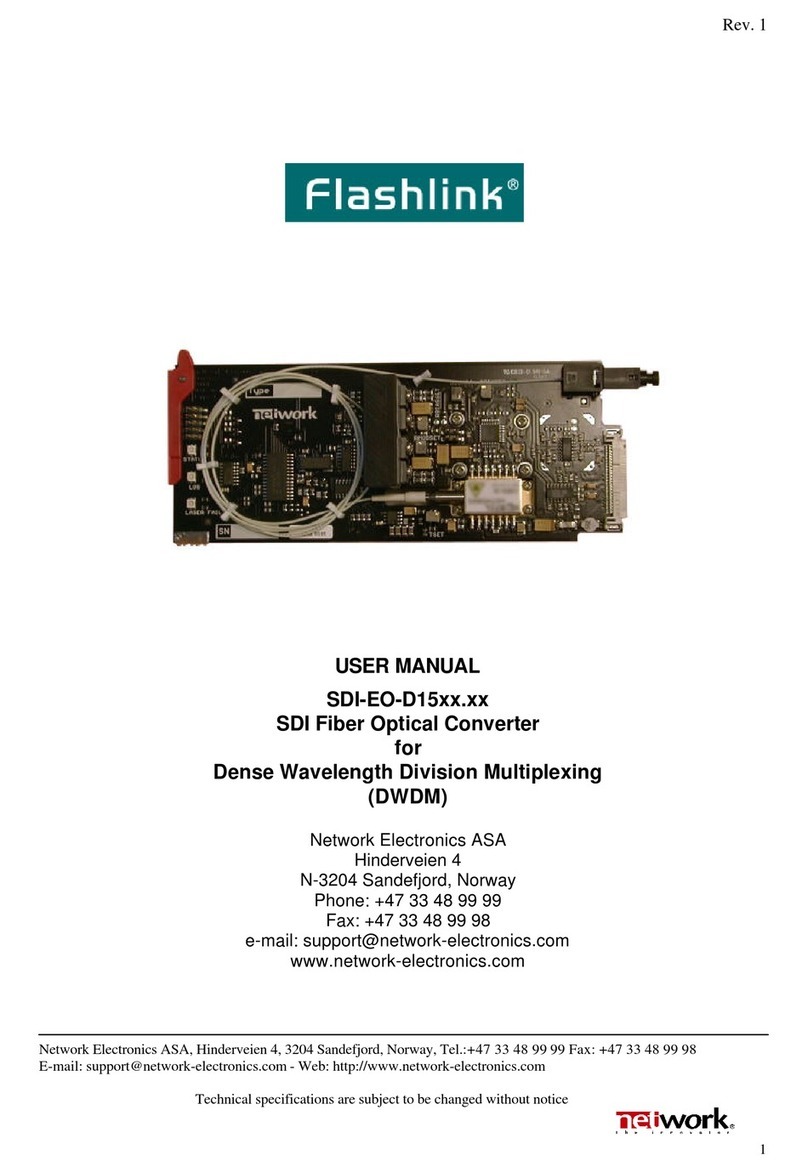
Network Electronics
Network Electronics SDI-EO-D15 Series User manual
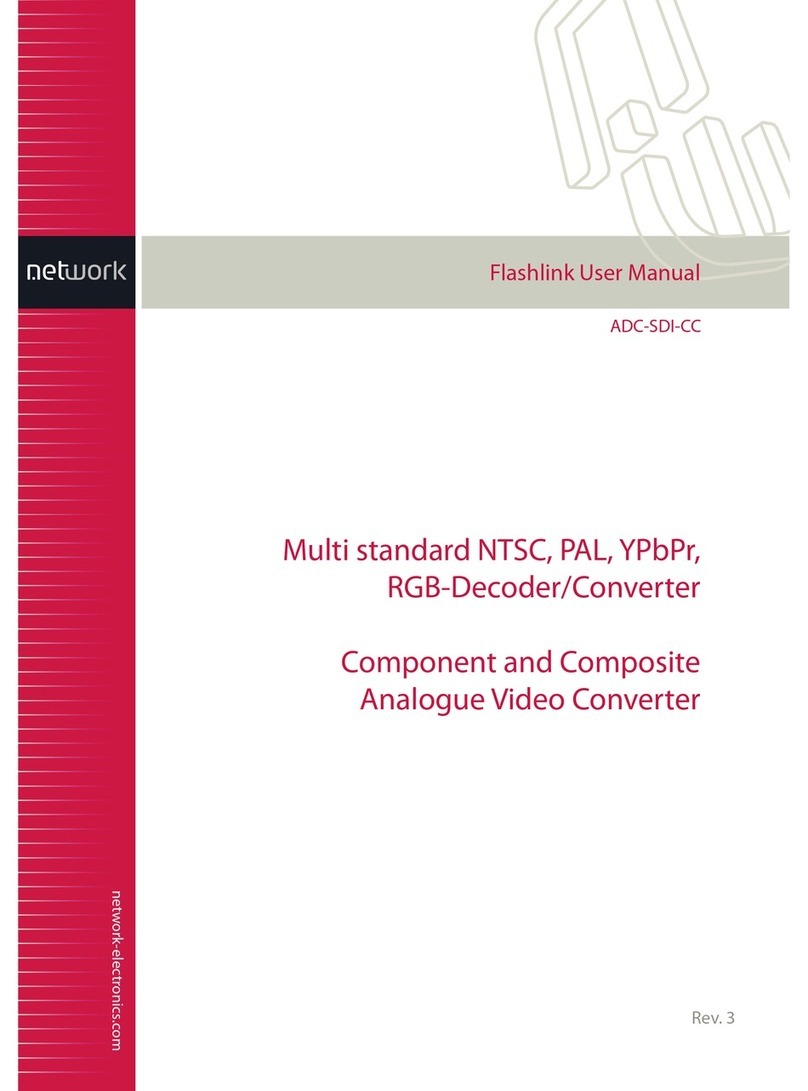
Network Electronics
Network Electronics ADC-SDI-CC User manual

Network Electronics
Network Electronics Flashlink HD-OE-2 User manual
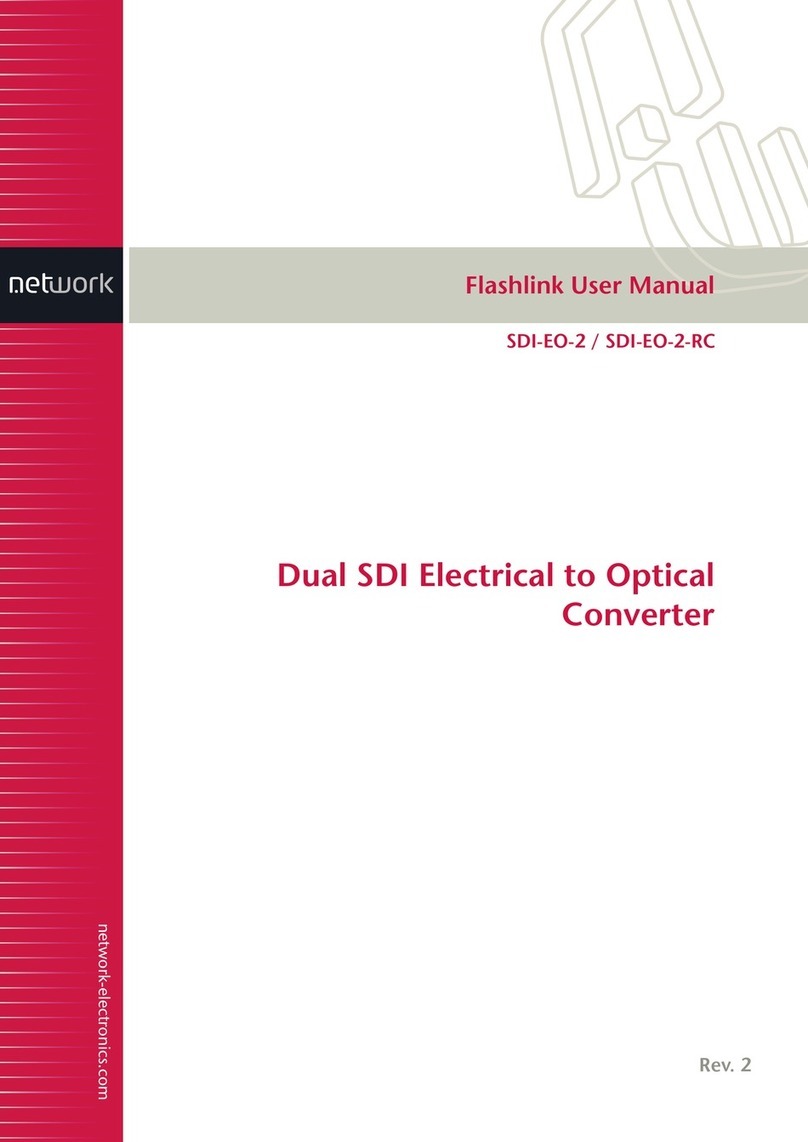
Network Electronics
Network Electronics Flashlink SDI-EO-2 User manual
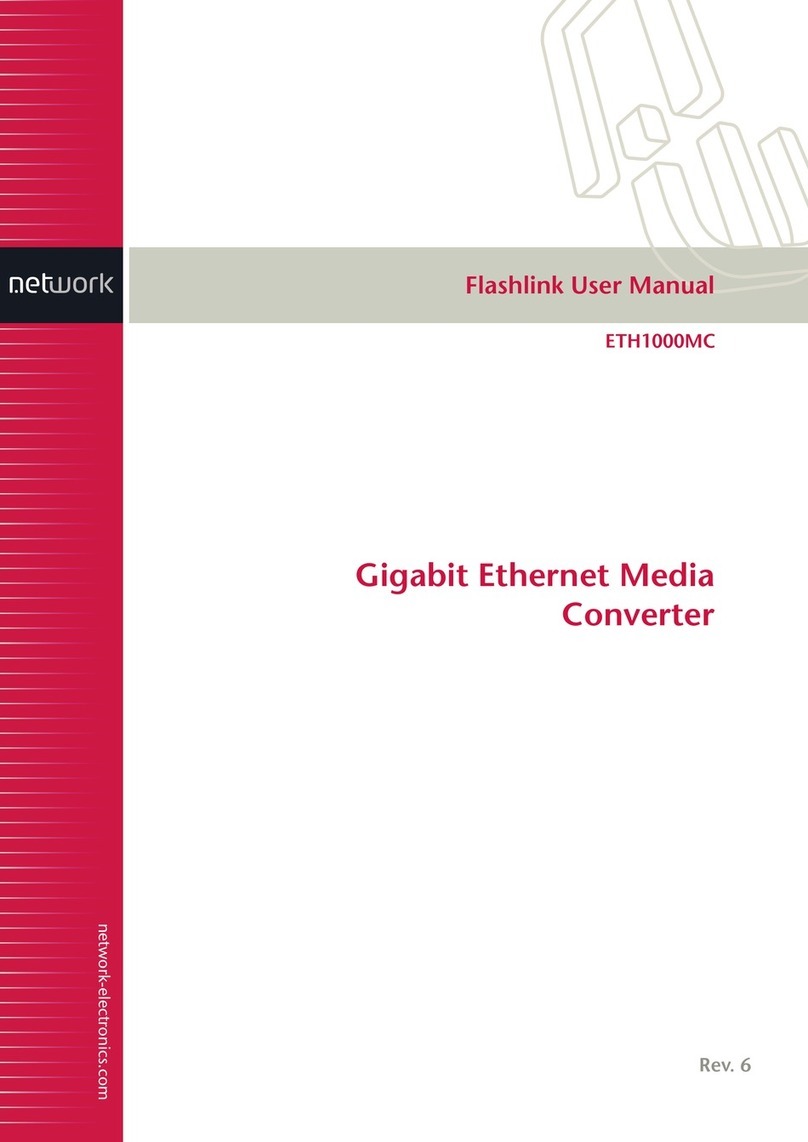
Network Electronics
Network Electronics Flashlink ETH1000MC User manual

Network Electronics
Network Electronics Flashlink HD-EO-2 User manual
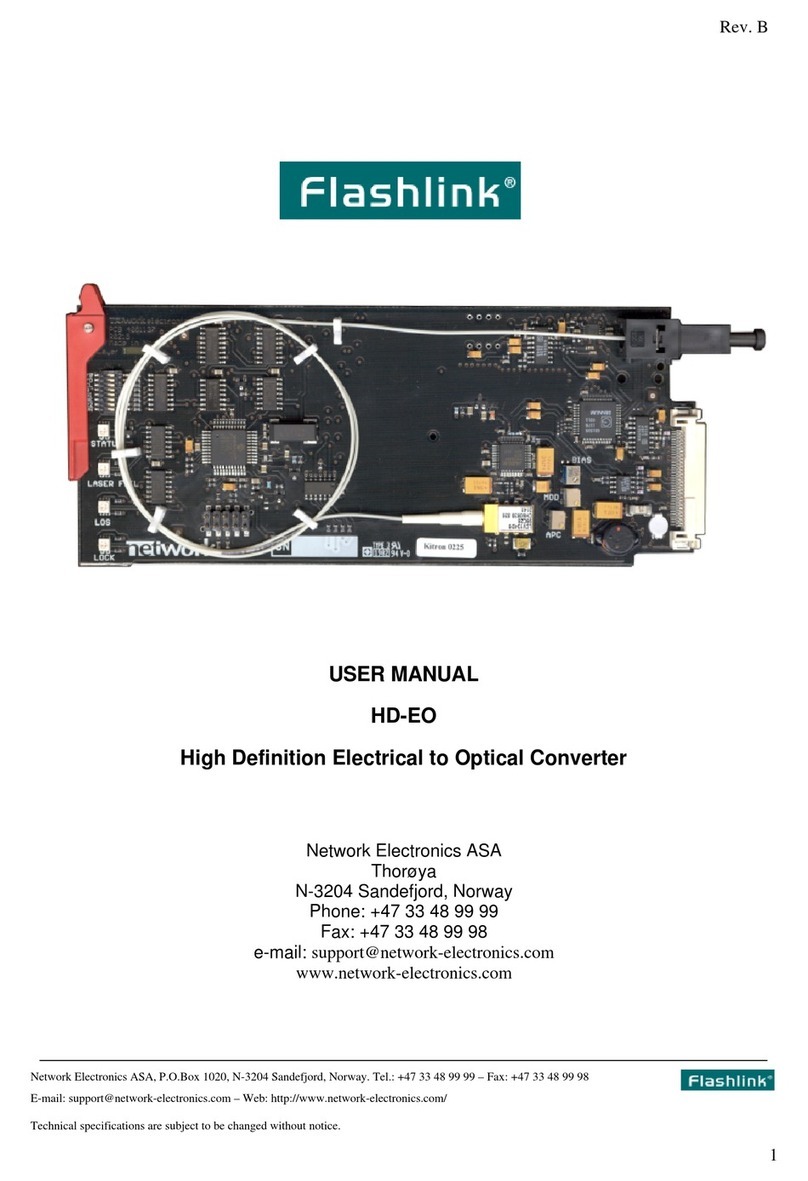
Network Electronics
Network Electronics HD-EO User manual
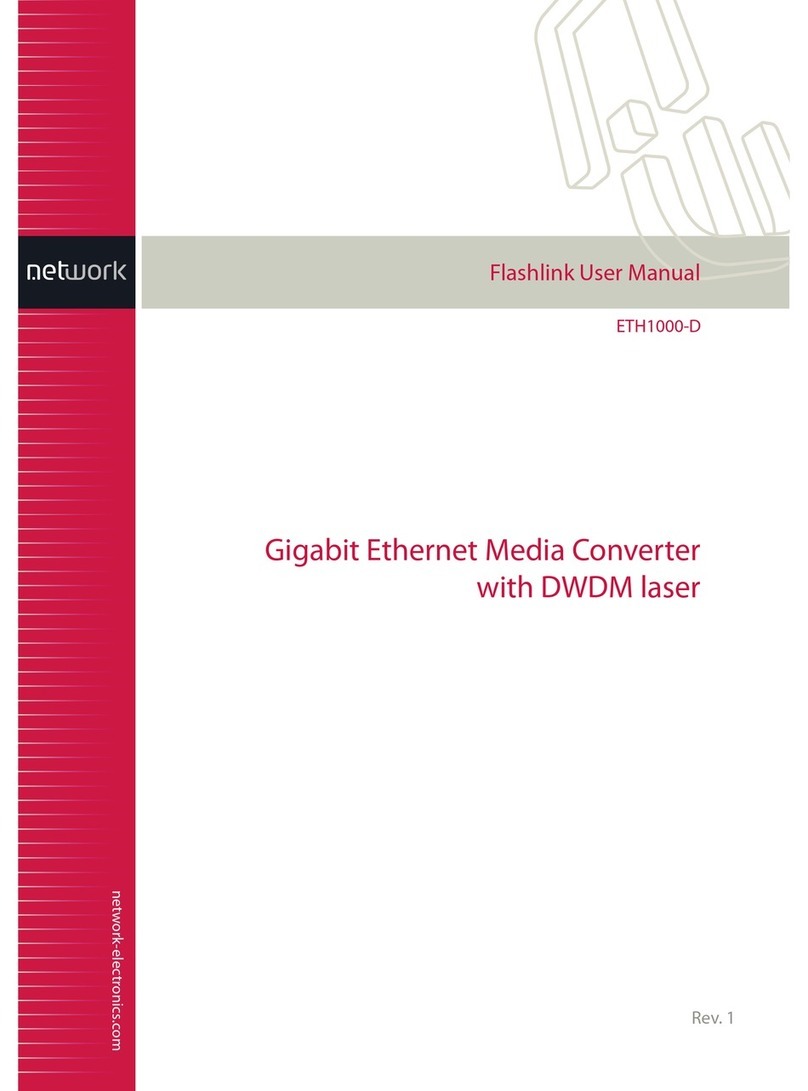
Network Electronics
Network Electronics Flashlink ETH1000-D User manual
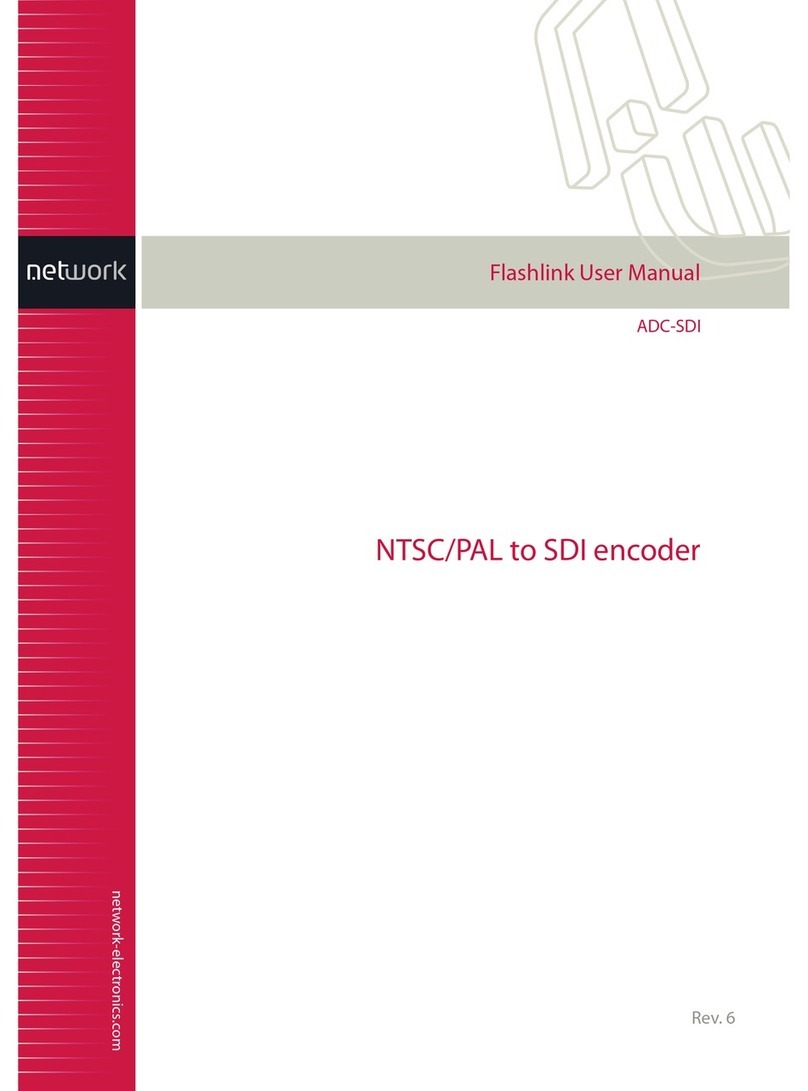
Network Electronics
Network Electronics ADC-SDI User manual
